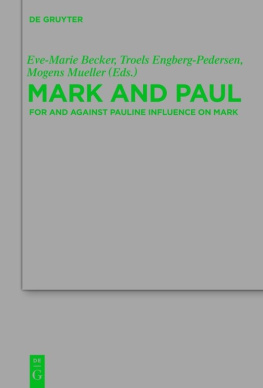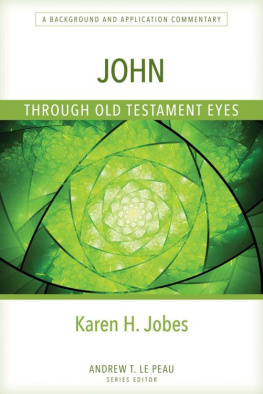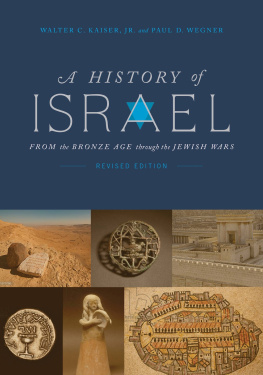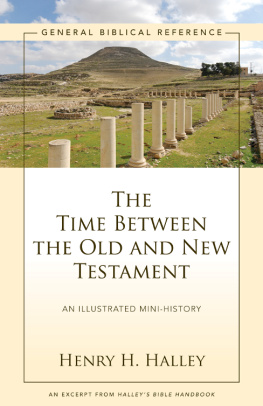Theissen - The New Testament: A Literary History
Here you can read online Theissen - The New Testament: A Literary History full text of the book (entire story) in english for free. Download pdf and epub, get meaning, cover and reviews about this ebook. year: 2013, publisher: Fortress Press (NBN), genre: Religion. Description of the work, (preface) as well as reviews are available. Best literature library LitArk.com created for fans of good reading and offers a wide selection of genres:
Romance novel
Science fiction
Adventure
Detective
Science
History
Home and family
Prose
Art
Politics
Computer
Non-fiction
Religion
Business
Children
Humor
Choose a favorite category and find really read worthwhile books. Enjoy immersion in the world of imagination, feel the emotions of the characters or learn something new for yourself, make an fascinating discovery.

The New Testament: A Literary History: summary, description and annotation
We offer to read an annotation, description, summary or preface (depends on what the author of the book "The New Testament: A Literary History" wrote himself). If you haven't found the necessary information about the book — write in the comments, we will try to find it.
Theissen: author's other books
Who wrote The New Testament: A Literary History? Find out the surname, the name of the author of the book and a list of all author's works by series.
The New Testament: A Literary History — read online for free the complete book (whole text) full work
Below is the text of the book, divided by pages. System saving the place of the last page read, allows you to conveniently read the book "The New Testament: A Literary History" online for free, without having to search again every time where you left off. Put a bookmark, and you can go to the page where you finished reading at any time.
Font size:
Interval:
Bookmark:
THE NEW TESTAMENT
A Literary History
English translation copyright 2012 Fortress Press. Translated by Linda M. Maloney; excerpted and adapted by the publisher from Die Entstehung des Neuen Testaments als literaturgeschichtlichesProblem, published by Universitatsverlag WinterGmbH, Heidelberg, 2007. All rights reserved. Except for brief quotations in critical articles or reviews, no part of this book may be reproduced in any manner without prior written permission from the publisher. Visit http://www.augsburgfortress.org/copyrights/contact.asp or write to Permissions, Augsburg Fortress, Box 1209, Minneapolis, MN 55440.
Some scripture quotations are based on the New Revised Standard Version Bible, copyright 1989 by the Division of Christian Education of the National Council of the Churches of Christ in the USA. Used by permission. All rights reserved.
Some scripture quotations are based on the Revised Standard Version of the Bible, copyright 1946, 1952, 1971 National Council of the Churches of Christ in the USA. Used by permission. All rights reserved.
Cover image: Frescoes in the Monastery of St. Theodora in Thessaloniki, Greece, Copyright Portokalis, 2010. Used under license from Shutterstock.com
Cover design: Tory Herman
Book design: The HK Scriptorium, Inc.
eBook ISBN: 978-1-4514-0868-3
Library of Congress Cataloging-in-Publication Data
Theissen, Gerd.
The New Testament : a literary history / Gerd Theissen ; translated by Linda M. Maloney.
p.cm.
Includes bibliographical references.
ISBN 978-0-8006-9785-3 (alk. paper)
1. Bible. N.T.History. 2. Bible. N.T.Canon. 3. Bible. N.T.Criticism,
interpretation, etc. 4. Christian literature, EarlyHistory and criticism. I. Title.
BS2315.T442011
225dc23
2011021848
This book was produced using PressBooks.com.
Table 1: The Structure of the New Testament in the Ancient Church Tradition
Table 2: The Origins of the New Testament from a Critical Viewpoint
Table 3: The Formal Language of Jesus Sayings
Figure 1: The Two-Source Theory
Table 4: Jesus Formal Language in the Sayings Source
Table 5: The Structure of Marks Gospel
Figure 2: Jesus Tradition and Pauline Letters
Table 6: Pre-Pauline Formulae
Table 7: Greek and Eastern Epistolary Prescripts
Table 8: Theological Development of the Pauline Letters
Table 9: Galatians and Romans
Table 10: 1 Corinthians and Romans
Table 11: 1 Thessalonians and 1 Corinthians
Table 12: Form-Critical Development of Pauls Letters
Table 13: Expansion of the Pauline Letter Collection
Table 14: The Earliest Attestations of the Letters of Paul
Table 15: Charismatic and Pseudepigraphic Phases of the History of Early Christian Literature
Table 16: The Salvation-Historical Conception of the Lukan Work
Table 17: Correction of Imminent Expectation of the End in Lukes Work
Table 18: The Johannine Prologue
Table 19: Sub-Genres and Their Establishment as Independent in the New Testament and Early Christianity
Table 20: Canonical and Apocryphal Books according to Eusebius
Table 21: Canonical and Apocryphal Literature
Table 22: Marcions Antitheses
This outline of a literary history of the New Testament is based on a lecture given before the Philosophical-Historical Class of the Heidelberg Academy of Sciences on 27 November 2004. It is a subject rooted in Heidelbergs traditions. The Heidelberg New Testament scholar Martin Dibelius wrote one of the first basic proposals for a history of early Christian literature (1926), and his student Philipp Vielhauer developed his ideas in an extensive history of early Christian literature (1975); as his assistant, I was present at the origins of this work. Both scholars emphasized the isolation of early Christian literature from its Hellenistic context. A counter-current running against this view began in the 1970s. Thus, my colleague Klaus Berger was able to point out a great many Hellenistic genres in the New Testament (1984). The Heidelberg professor of Classical Philology Albrecht Dihle treated early Christian literature in his 1989 work Die griechische und lateinische Literatur der Kaiserzeit as a part of ancient literature. The present proposal continues all these lines. Since I began to study theology and German literature I have had the dream of a literary history that would make it possible, through the use of literary-critical methods, to understand the origins of the New Testament as the beginnings of one of the most important collections of texts in the literature of world religion. The presentation concentrates on the development of the formal language of the New Testament in four phases, intending thereby to make visible its connection to its environment and to the overall history of early Christianity. The preparation of this book was made possible by a study year at the Alt. Kolleg, Heidelberg 20052006, which allowed time for a thorough revision of the first draft. I thank all those who made that research year possible for me. I am grateful to Corina Cloutier and Kristina Wagner for their assistance in reading the proofs, and to Dr. Bernhard Mutschler for a critical reading of the whole manuscript and many valuable suggestions.
I dedicate this book to the theological faculty of the Reformed Kroly Gspr University in Budapest, who bestowed an honorary doctorate on me in October 2005. Thirteen years ago, with a series of lectures in Budapest on Gospel Writing and Church Politics, I began my thoughts on a literary history of the gospels. Some of the ideas then presented in Budapest have been carried out in this book with regard to the entire New Testament.
The New Testament contains twenty-seven writings from a small religious subculture in the Roman empire of the first two centuries. All the writings originated between about 50 and 130 c.e. They constitute a segment of an extensive body of early Christian writing, of which about ninety documents have survived, either entire or as fragments. On the other hand, many apocryphal writings were considered more or less heretical. Most of these are documents related to Gnosis, a radical redemptive piety that from the beginning of the second century c.e. onward offered a profound reinterpretation of early Christian faith.
The idea of a canon, attested since about the year 180, and its acknowledgment in the next two centuries constituted the end of early Christian scriptures, in which we may count all the writings that formally continue the literary history of the New Testament and in their content draw on the same complex of convictions and traditions as the New Testament writings. With the acknowledgment of the idea of canon there arose a theology characterized less and less by a creative continuation of New Testament content and forms in new documents, and more and more by interpretation of the New Testament and the adoption of forms and motifs from the general literature of antiquity. Patristic literature replaced early Christian literature. We can illustrate the literary-critical transformation in terms of two developments between 100 and 180 c.e. The first is very revealing of the attitude of early Christianity toward itself and its traditions: the (second) conclusion to the Gospel of John, at the end of the first century, points to an indefinite number of possible gospels: There are many other things that Jesus did... if they were all to be written, I suppose the whole world could not contain the books that would be written (John 21:25). In contrast, Irenaeus asserted around 180 that there was a fourfold gospel, corresponding to the four wind directions and the four figures around the divine throne (Haer. 3.11.7-9). For him there were necessarily four gospels and no more. The idea of a closed canon is present; all that seems to remain open is the actual extent of the epistolary literature. A second development is indicative of Christianitys relationship to its environment: at the beginning of the second century Tacitus, Suetonius, and Pliny
Font size:
Interval:
Bookmark:
Similar books «The New Testament: A Literary History»
Look at similar books to The New Testament: A Literary History. We have selected literature similar in name and meaning in the hope of providing readers with more options to find new, interesting, not yet read works.
Discussion, reviews of the book The New Testament: A Literary History and just readers' own opinions. Leave your comments, write what you think about the work, its meaning or the main characters. Specify what exactly you liked and what you didn't like, and why you think so.







